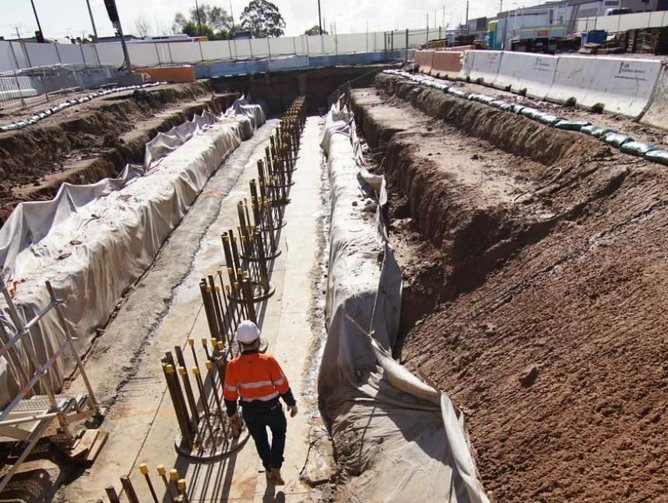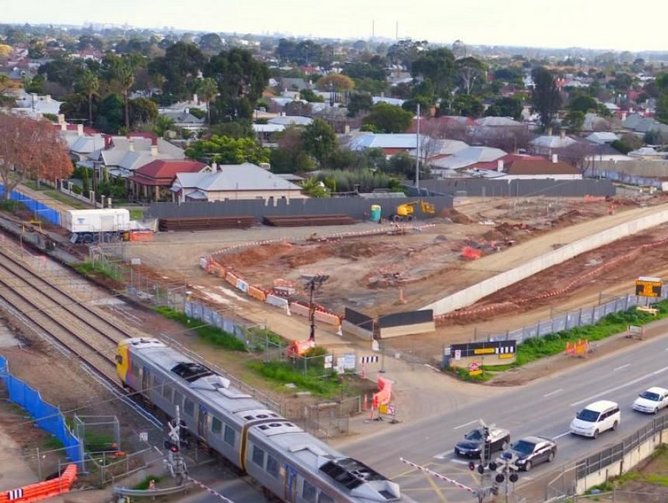Road improvement projects can offer more than just a smoother road surface or reduced travel times to a local community. For the people of South Australia, the Torrens Road to River Torrens Project will bring social and economic — as well as logistical — benefits.
In 2015, the T2T Alliance, a consortium comprised of construction companies CPB and York Civil, consulting engineers Aurecon Australia and South Australia’s Department of Planning, Transport and Infrastructure, broke ground on the originally-proposed project for a 3km non-stop roadway north of Adelaide. The scope of the project included 2km of lowered motorway; three lanes in each direction from South of Torrens Road to North of Ashwin Parade; parallel surface roads; two lanes in each direction, each side of the lowered motorway; improved cycling and pedestrian facilities and landscaping and noise barriers where required.
In December 2015, the project was expanded to include the grade separation of Torrens Road, increasing the scope of the project to 4km of non-stop roadway, with a 3km lowered motorway. Approximately 30 to 50 thousand vehicles per day travel this section South Road, with only two lanes of traffic extending in each direction.
On paper, the scale of the project could seem indicative of a significant travel interruption for commuters. However, the T2T Alliance is committed to ensuring that this isn’t the case, with all disruptive work taking place outside of business hours.
“We don't actually alter any of the existing travel lanes during the normal business hours through Monday to Friday,” says Paul Steendyk, Alliance General Manager. “We have had positive feedback from local stakeholders, businesses and residents. They very much value the fact that normal business and getting to work hasn’t changed. They can, therefore, allow the time at weekends to manage the impact of what we do.”
Both Steendyk and Jon Whelan, the Project Director, emphasise the importance of community consultation throughout the duration of works. Responsibility and respect are the values at the core of their interaction with the local residents.
“We have strong community liaison group that has representation from businesses, local community and the surrounding Council that meets to discuss the project on a regular basis,” Steendyk explains.
Ultimately, local people and businesses will be first to feel the positive impacts of the Torrens Road to River Torrens project, with an average of 480 jobs created during each year of the construction phase.
“This was the first major road infrastructure project that went to tender at that time,” says Whelan of construction market at the project’s inception. “This was near-on seen as the saviour for a lot of industries and a lot of people out of work.”
The T2T Alliance has committed to providing employment opportunities for a ‘target’ demographic identified by the Government of South Australia — including Aboriginal people, trainees and apprentices, local people with barriers to employment and displaced automotive sector employees. Twenty percent of the project’s total onsite labour hours will be carried out by employees hired from the target group.
“With this project we put a lot of emphasis on urban uplift,” says Steendyk.
The landscaping and public spaces incorporated within the new road corridor are further designed with the wellbeing of local residents in mind.
“They’re not just concrete structures,” Steendyk says. “There is green space, some green area for people to use, noise walls. The existing traffic on the current road must have been unbearable at some properties.”
The T2T project is a part of a broader north-south corridor which is crucial for freight and commuter travel through metropolitan Adelaide. According to Whelan and Steendyk, the new road will improve travel times significantly.
“This road carries around the 10 to 15 percent commercial vehicles,” Steendyk says. “By actually improving the road network, not only the lowered motorway but also the surface road, you'll actually increase the productivity of freight and movement of produce within the local area.”
The safety of both road users and construction workers is a paramount concern for the T2T Alliance, and was factored into both the design and construction processes.
“When you build a new road corridor that incorporates a lowered motorway with three lanes in each direction and two lanes on the surface roads it is about reducing the risk of crashes,” Steendyk says. “You’re separating the conflicts at intersections.”
‘Rubbernecking’ is a well-known phenomenon at construction sites, with drivers craning their heads to observe work in motion. T2T workers are instructed to use a combination of ‘gawk screens’ and concrete barriers to ensure that prying eyes stay on the road.
At the end of the day, success in construction is about combining efficacy in design with effectiveness in execution. By all accounts, T2T is on the right track.
“It’s about having the right skill sets and being able to demonstrate a construction methodology that meets requirements and challenges,” Whelan says.






